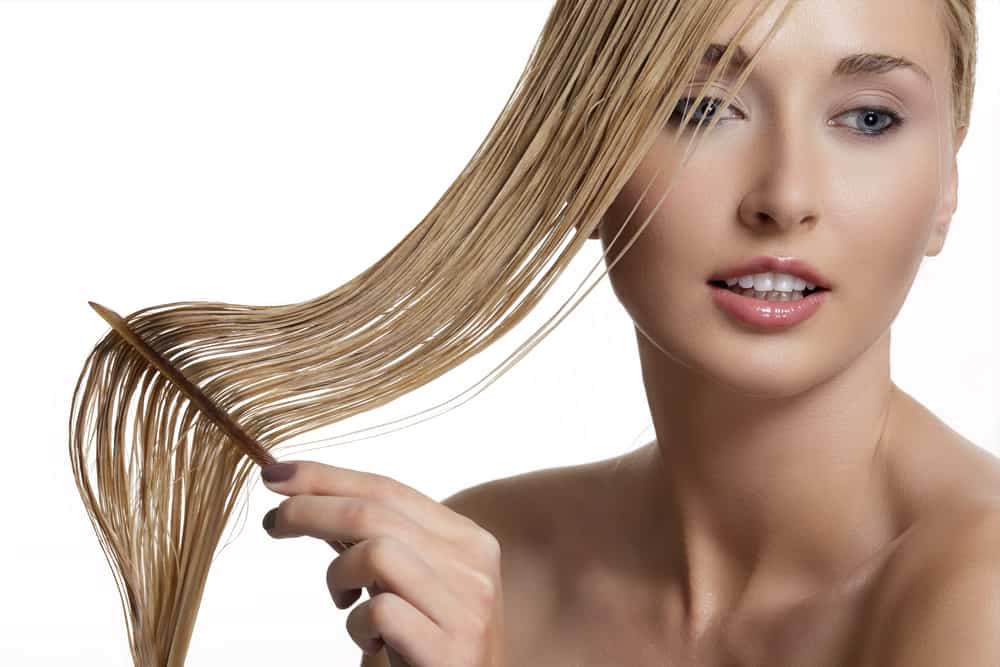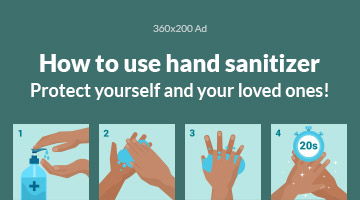ShareTweetPin0 Shares
No, you should not bleach wet hair. Bleaching is a chemical process that lightens the color of hair by stripping it of its natural pigment. The chemicals in the bleach are caustic and can cause burning or irritation when applied to wet hair because they have more direct contact with the scalp. Additionally, applying bleach directly on damp strands may also reduce their ability to hold dye evenly since too much moisture will make them swell and open up cuticles faster than normal, resulting in patches of uneven coloring. Therefore, it is best to allow your hair to dry completely before bleaching for optimal results and less damage.
Step 1: Gather the materials. You will need a pair of gloves, bleach powder, a brush and a bowl.
Step 2: Prepare your hair for bleaching by washing it with shampoo and conditioner to remove any dirt or build-up. Towel dry your hair until damp but not wet.
Step 3: Put on your gloves before beginning the bleaching process as this can be hazardous to skin if not done carefully.
Step 4: Create the bleach mixture in a bowl according to package instructions using equal parts of bleach powder and developer solution.
Step 5: Apply the mixture directly onto damp hair using an applicator brush or gloved fingers, focusing on areas that you want lightened most such as ends or highlights around face area.
Step 6: Leave on for 15–30 minutes depending on desired level of lift then rinse with cool water until all traces have been removed from scalp and hair shafts. Dry with towel then follow up with deep conditioning treatment after rinsing out bleach mixture completely to help repair damage caused by chemical lightening agents.

Credit: hairstylecamp.com
Table of Contents
What Happens If I Bleach My Hair Wet? Can I Bleach Freshly Washed Hair? Does Heat Bleach Hair Faster? Is it better to bleach hair wet or dry?How Long to Leave Bleach on Wet Hair Conclusion
What Happens If I Bleach My Hair Wet?
If you bleach your hair when it is wet, it can have serious consequences. The moisture in wet hair causes the bleach to penetrate further into each strand of hair, which can cause the chemical reaction between the bleaching agent and your hair’s proteins to be stronger than intended. This could lead to a greater amount of damage to your tresses, including dryness, breakage or worse – even melting of your strands! In addition, because wet hair has already been exposed to water and other elements like chlorine from pools or showers, there is an increased risk that those chemicals will interact with the bleach you are using and create an unpredictable result. For these reasons alone, many stylists recommend avoiding bleaching your hair when it’s wet as this can significantly increase the chances of causing unnecessary damage.
Can I Bleach Freshly Washed Hair?
No, you should not use bleach on freshly washed hair as this is a harsh chemical and may cause damage to your locks. Bleach will strip away the natural oils in your hair, leaving it dry and brittle, which can lead to breakage. Bleaching also has a high risk of causing scalp irritation if not done correctly – especially for those with sensitive skin or allergies. Instead of bleaching your freshly washed hair, opt for using lighter products such as semi-permanent dye or highlights that are easier on the scalp and don’t require any harsh chemicals. If you want an even more subtle change in color and texture without damaging your strands, try using a conditioning mask after washing instead; this will help nourish the strands while adding shine and softness.
Does Heat Bleach Hair Faster?
When it comes to bleaching hair, the answer is not as straightforward as you may think. While heat can help speed up the process of bleaching hair, it can also be damaging if used in excess amounts. Heat opens up the cuticle of your hair, allowing more chemicals to penetrate and make faster changes to your color. Applying too much heat or using tools that are too hot for your specific type of hair could cause irreversible damage such as split ends or even breakage. Additionally, when using bleach with heat, you run a greater risk of over-processing which could leave behind an undesired orange hue instead of achieving a white blonde shade. The best way to avoid these problems is by following instructions closely and keeping track on how long each step takes so that you don’t overdo it. If you’re unsure about what temperatures work best for your particular type of hair, start off low and see how that works out before increasing temperatures incrementally until desired results are achieved without any harm done to your locks!
Is it better to bleach hair wet or dry?
How Long to Leave Bleach on Wet Hair
When applying bleach to wet hair, it is important to leave the product on for no more than 15 minutes. Doing so will help ensure that the hair does not become overly damaged or dried out from prolonged contact with the chemical. It is also recommended that a deep conditioner be applied after bleaching in order to keep the strands healthy and hydrated.
Conclusion
In conclusion, bleaching wet hair can be a risky venture that could potentially cause serious damage to your locks. If you are considering going through with this process, it is best to do as much research as possible and consult a professional stylist to ensure the best results. Ultimately, only you can decide if bleaching wet hair is worth the risk of damaging your strands.
{
“@context”: “https://schema.org”,
“@type”: “FAQPage”,
“mainEntity”:[{“@type”: “Question”,
“name”: “What Happens If I Bleach My Hair Wet? “,
“acceptedAnswer”: {
“@type”: “Answer”,
“text”: ”
If you bleach your hair when it is wet, it can have serious consequences. The moisture in wet hair causes the bleach to penetrate further into each strand of hair, which can cause the chemical reaction between the bleaching agent and your hair’s proteins to be stronger than intended. This could lead to a greater amount of damage to your tresses, including dryness, breakage or worse – even melting of your strands! In addition, because wet hair has already been exposed to water and other elements like chlorine from pools or showers, there is an increased risk that those chemicals will interact with the bleach you are using and create an unpredictable result. For these reasons alone, many stylists recommend avoiding bleaching your hair when it’s wet as this can significantly increase the chances of causing unnecessary damage.”
}
}
,{“@type”: “Question”,
“name”: “Can I Bleach Freshly Washed Hair? “,
“acceptedAnswer”: {
“@type”: “Answer”,
“text”: ”
No, you should not use bleach on freshly washed hair as this is a harsh chemical and may cause damage to your locks. Bleach will strip away the natural oils in your hair, leaving it dry and brittle, which can lead to breakage. Bleaching also has a high risk of causing scalp irritation if not done correctly – especially for those with sensitive skin or allergies. Instead of bleaching your freshly washed hair, opt for using lighter products such as semi-permanent dye or highlights that are easier on the scalp and don’t require any harsh chemicals. If you want an even more subtle change in color and texture without damaging your strands, try using a conditioning mask after washing instead; this will help nourish the strands while adding shine and softness.”
}
}
,{“@type”: “Question”,
“name”: “Does Heat Bleach Hair Faster? “,
“acceptedAnswer”: {
“@type”: “Answer”,
“text”: ”
When it comes to bleaching hair, the answer is not as straightforward as you may think. While heat can help speed up the process of bleaching hair, it can also be damaging if used in excess amounts. Heat opens up the cuticle of your hair, allowing more chemicals to penetrate and make faster changes to your color. Applying too much heat or using tools that are too hot for your specific type of hair could cause irreversible damage such as split ends or even breakage. Additionally, when using bleach with heat, you run a greater risk of over-processing which could leave behind an undesired orange hue instead of achieving a white blonde shade. The best way to avoid these problems is by following instructions closely and keeping track on how long each step takes so that you don’t overdo it. If you’re unsure about what temperatures work best for your particular type of hair, start off low and see how that works out before increasing temperatures incrementally until desired results are achieved without any harm done to your locks!”
}
}
]
}







